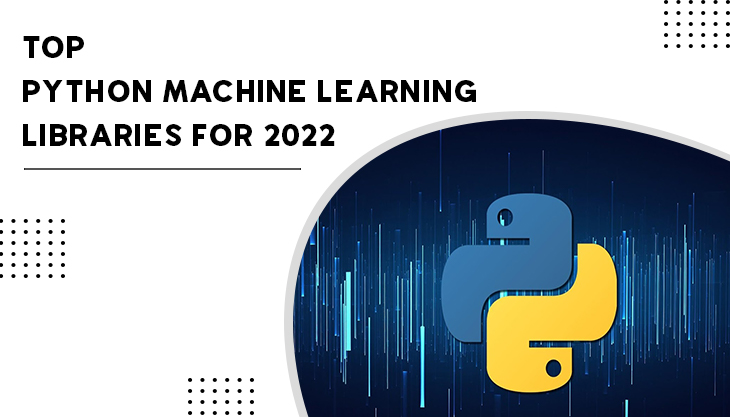In this era of artificial intelligence, we often encounter the term "Machine Learning". What is machine learning? Well, It is not very different from human Learning. Humans learn by observing the world and then use these observations to respond more effectively and efficiently in future under similar circumstances.
Similarly, the machine learning process begins with observations or data. It finds patterns in data so it can later make inferences based on the models provided. The main aim of machine learning is to allow computers to learn and improve autonomously without human intervention and adjust future actions accordingly.
There Are Three Types Of Machine Learning:-
1. Supervised Learning
Supervised Learning is machine learning in which machines are trained using well "labelled" training data, and based on labelled data, the system predicts the output. Labelled data is some input data already tagged with the correct result.
In supervised Learning, the labelled data fed to the machines work as the supervisor who teaches the machines/ system to predict the output correctly. It uses the same concept as a student learns under the teacher's supervision.
2. Unsupervised Learning
Unsupervised Learning is a machine learning methodology in which models are not supervised using a training dataset. Instead, models find the hidden patterns and insights from the given data. It can be compared to Learning, which occurs in the human brain while learning new things.
3. Reinforcement Learning
Reinforcement Learning is a feedback-based Machine learning technique in which an agent learns to behave in an environment by performing the actions and seeing the results. For each excellent effort, the agent gets positive feedback, and for each lousy step, the agent receives negative feedback or a penalty.
In Reinforcement Learning, the agent learns automatically using feedback without any labelled data, unlike supervised Learning. Since there is no labelled data, the agent is bound to know by its experience only.
Now that we are familiar with some basics of machine learning let's see what the top Python machine learning libraries in 2022 are. Before that, you might ask what a machine learning library is? And why learn about Python machine learning libraries at all?
What Is A Machine Learning Library?
A Machine Learning library, or a Machine Learning framework, is a set of routines and functions written in a given programming language. Essentially, they are interfaces, libraries or tools helping developers efficiently and quickly build machine learning models, going past the specific basic details of the underlying algorithms. So they help developers carry out complex tasks without having to rewrite many lines of code.
Why Learn About Python Machine Learning Libraries?
It is important to learn about Python machine learning libraries because Python is one of the most used and fastest-growing programming languages, outdistancing others such as JavaScript, Java, C#, and PHP. Programmers love using Python because of its readability and simplicity.
As a result, a machine learning engineer who aspires to create smart algorithms for his machines turns to instruments that make it easy for the device to comprehend and understand the information. And, that's where Python comes in.
Given below are some of the reasons why one should learn Python machine learning libraries:
* They are free and open-source, making them community-friendly, which in turn guarantees a constant flow of improvements in the long run.
* Libraries, in turn, have exhaustive libraries that ensure you can find a solution for every existing problem.
* Their smooth implementation and integration make it accessible for people of any skill level to adapt to it.
* Using libraries increases productivity by reducing coding and debugging times.
* It is useful for soft computing and natural language processing.
* It works seamlessly with C and C++ code modules.
Top Python Machine Learning Libraries
1. Tensor Flow
* TensorFlow is a modern open-source library for high-performance numerical computation developed by the Google Brain team.
* It is a framework for running and defining calculations involving tensors.
* It runs and trains deep neural networks that can be used to develop applications.
* It is enormously used in the field of deep learning research.
2. NumPy
* NumPy is the most used Python library for large multi-dimensional arrays and matrix processing, with an extensive collection of high-level mathematical functions.
* It is beneficial for fundamental scientific computations in Machine Learning.
* NumPy is also useful for linear algebra, Fourier transform, and random number capabilities.
* High-end libraries such as TensorFlow use NumPy internally for the manipulation of Tensors.
3. SciPy
* It is a prevalent library among Machine Learning enthusiasts as it contains modules for optimization, linear algebra, integration, and statistics.
* It is one of the core packages that make up the SciPy stack.
* It is a valuable tool for image manipulation.
4. Scikit-Learn
* Most popular machine learning libraries for classical algorithms.
* It is built on two basic Python libraries: NumPy and SciPy.
* It supports almost all of the supervised and unsupervised learning algorithms.
* It is also used for data mining, and data analysis makes it an excellent tool for starting with machine learning.
* Theano
* Theano is a popular python library used to efficiently define, evaluate, and optimize mathematical expressions involving multi-dimensional arrays.
* It is achieved by maximizing the utilization of CPU and GPU.
* It is heavily used for unit-testing and self-verification to detect and diagnose different types of errors.
* Theano is a powerful library used in large-scale computationally intensive scientific projects for a long time. Still, it is approachable and straightforward enough to be used by individuals for their projects.
6. Keras
* Keras is a high-level neural networks API qualified to run on top of CN, Tensorflow and Theano.
* It makes it easy for ML beginners to build and design a Neural Network.
* One of the best things about Keras is that it allows for easy prototyping.
7. PyTorch
* It is a popular open-source Machine Learning library for Python based on Torch, an open-source Machine Learning library used in C with a wrapper in Lua.
* It has a wide range of tools and libraries that support Natural Language Processing(NLP), computer vision and many more machine learning programs.
* PyTorch allows developers to perform computations on Tensors with GPU acceleration and also helps in creating computational graphs.
8. Matplotlib
* Matplotlib is a prevalent Python library for data visualization.
* It is a 2D plotting library that helps create 2D graphs and plots.
* It offers various kinds of graphs and plots for data visualization, viz., histograms, error charts, bar charts, etc.,
9. Pandas
* It is a popular Python library used for data analysis. It's not directly related to Machine Learning, but it's useful as it was developed for data extraction and preparation. It provides high-level data structures and a variety of tools for data analysis.
10. Open CV
* It is an extensive open-source library for machine learning, computer vision and image processing.
* It supports various programming languages like C++, Python, Java, etc. It can process videos and images to identify faces, objects and even handwriting.
* When it is combined with various libraries, such as Numpy, a highly optimized library for numerical operations, the number of weapons increases in your Arsenal, i.e. whatever operations one can do in Numpy can be combined with OpenCV.
11. Seaborn
* It is a library for creating statistical graphics in Python.
* It builds on top of Matplotlib and combines closely with Pandas data structures.
* Seaborn helps you understand and explore your data.
* Its plotting functions operate on data frames and arrays containing whole datasets and internally perform the necessary semantic mapping and statistical aggregation to produce informative plots.
* Its dataset-oriented, declarative API lets you focus on what the different elements of your plots mean rather than on the details of how to draw them.
12. Apache Spark
* Apache Spark is an information processing framework that performs processing tasks very quickly on substantial data sets.
* It also distributes data processing tasks across multiple computers, either on its own or in tandem with other distributed computing tools. These two qualities are critical to the big data and machine learning worlds, demanding the marshalling of enormous computing power to crunch through large data stores.
* Spark also takes some of the programming burdens of these tasks off the shoulders of developers with an easy-to-use API that abstracts away much of the grunt work of distributed computing and big data processing.
With this insight on python machine learning libraries stay and keep in touch with today's technological world!
















Post Comments